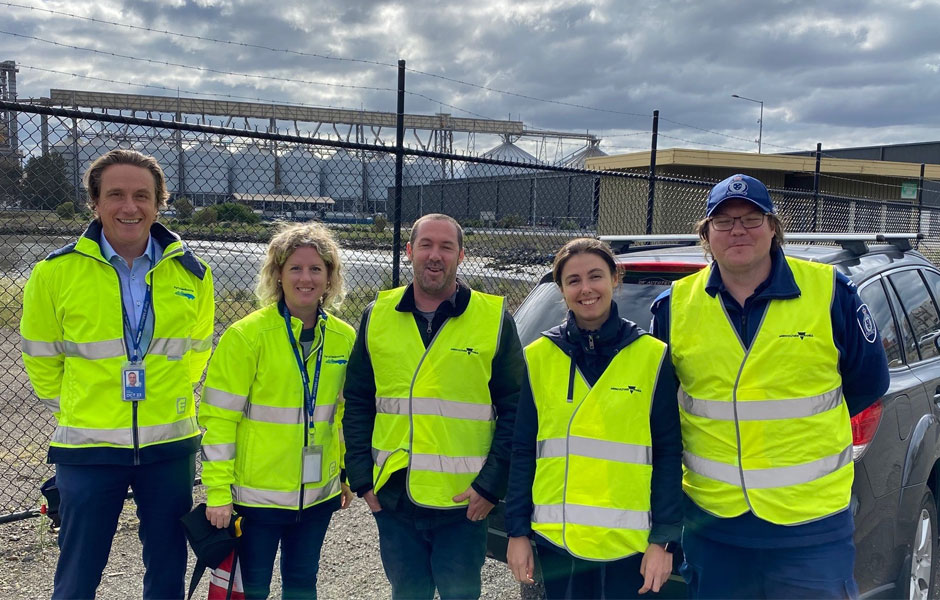Testing the waters – Victorian Ports Marine Surveillance Pilot Program
A new surveillance program within the Port of Melbourne and Station Pier is set to provide an early warning for introduced marine pests.
The Testing the Waters Victorian Ports Marine Surveillance Pilot Program is a shared effort between Agriculture Victoria, the Port of Melbourne, Victorian Ports Corporation (Melbourne), Deakin University and EnviroDNA. This project was made possible through the Victorian Government’s investment to strengthen Victoria’s biosecurity system and protect people and jobs.
Agriculture Victoria Principal Officer Invasive Marine Species, Richard Stafford-Bell said the project is the first of its kind to be trialled in Victoria.
“The most effective way of managing marine pests is to prevent their introduction,” Dr Stafford-Bell said.
“Early detection is just so critical as our control options are very limited.
“Finding and eradicating marine pest populations under the water is very difficult. Surveillance gives us a chance to detect introduced pests and work out what to do about them – early.”
Testing the Waters will run until mid-2022 and the results will guide the establishment of a long-term surveillance program for all of Victoria’s high-risk commercial seaports.

The risk in our seas
Marine pests are highly invasive plants and animals that can have significant impacts on Victoria’s marine industries, environment and social amenity.
“The high-risk Asian Shore Crab is a great example of why we need to detect new pests early,” Dr Stafford-Bell said.
“It was first detected in Port Philip Bay in October 2020 and by early 2021 more than 250 had been removed across ten sites in the north and east of the Bay.”
A single female Asian Shore Crab can produce tens of thousands of eggs each year.
“We’ve only just discovered this species in Victoria but unfortunately it is already well and truly established,” Dr Stafford-Bell said.
“Early detection of marine pests is the critical first step in managing new incursions.”
Taking action on marine biosecurity
The Port of Melbourne is Australia’s busiest containerised port, receiving more than 3000 vessel entries each year. The port is therefore the ideal location for the placement of surveillance equipment to aid in the early detection of marine pests.
“This project provides multiple benefits to both Agriculture Victoria and the port,” Dr Stafford-Bell said.
“We can detect marine pests early, which will improve our chances of acting quickly to reduce the impact on our marine environment and port operations.
“We will also be gaining valuable information on native marine life within our ports, which are often considered to be highly disturbed environments.”
What has been achieved so far?
- Sampling locations were identified in the port waters.
- Settlement arrays were designed and manufactured and placed in the water at key sites for two months. The arrays are an aluminium frame with floats and PVC plates which provide space for marine organisms to attach to and grow.
- In August the arrays were retrieved, and the plates sent to the lab for molecular analysis.
- Water samples and plankton tow samples collected at the time of array retrieval were also sent to the lab.
- The summer sampling period began in late December 2021 and will conclude in late February 2022.
- Port of Melbourne staff have assisted with site selection, deployment and retrieval of arrays and sample collection.
- Deakin University and EnviroDNA are conducting the molecular analysis on behalf of Agriculture Victoria.
Resources
Learn more about marine pests and know how to report a marine pest sighting.
